#Fujifilm GFX 100 II
Text
Will there ever be a successor to the Lumix GX8 or has Panasonic now nailed its flag to the DSLR-style mast? And more...
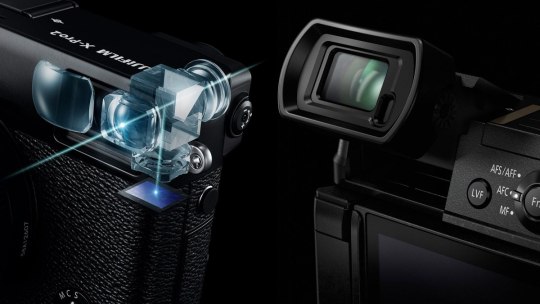
View On WordPress
#DxOFilmPack#DxOFilmPackElite#DxOPhotoLab#DxOPhotoLabElite#DxOViewPoint#@DxOLabs#@FujifilmEMEA#@fujifilmfrance#@FujifilmUK#@FujifilmX_AU#@FujifilmX_US#@FUJIFILM_UK#@FUJINONLenses#@nikcollection#DeepPRIME XD#DxO#FHoP#Fujifilm#Fujifilm GFX 100 II#Fujifilm House of Photography#Fujinon#Panasonic Lumix DMC-GX8#Panasonic Lumix GX8#Rolleiflex Twin-Lens Reflex cameras
0 notes
Text
Fujifilm готовит анонс GFX100S II?
Cледующей новой камерой со сменной оптикой, кот... Читать дальше »
0 notes
Text
A Complete Guide to Buying Fujifilm Cameras in 2022
GFX or X series?
Fujifilm cameras are pretty incredible. When the X series hit the market a bit over a decade ago, everyone immediately fell in love. And as time as passed, the systems have aged like fine wine. We’ve reviewed pretty much every Fujifilm camera on the market. And so we’re diving into the cameras you’ll want and providing a bit of an intro to the system.
(more…)

View On WordPress
0 notes
Text
Exploring Fujifilm's New Masterpiece, The GFX 100S II?
Fujifilm has once again disrupted the market with its latest release, the GFX 100S II. Boasting an impressive 102 megapixels, this camera is a game-changer for photographers who prioritize stills above all else. In this review I will make a picture about this last release and analyse is it really a Fujifilm’s new masterpiece.
For landscape enthusiasts like myself, the quest for the perfect shot…
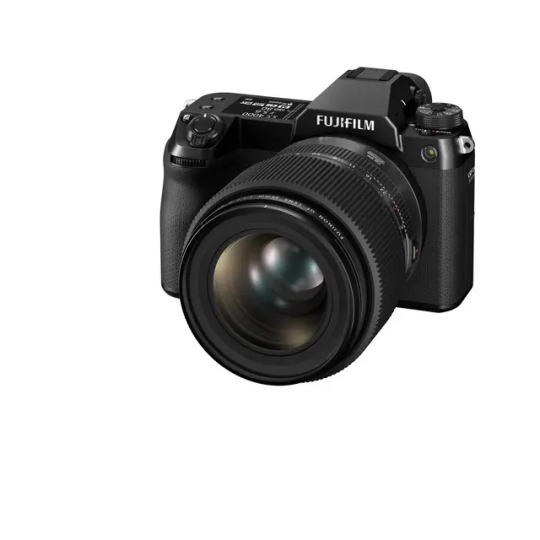
View On WordPress
0 notes
Photo
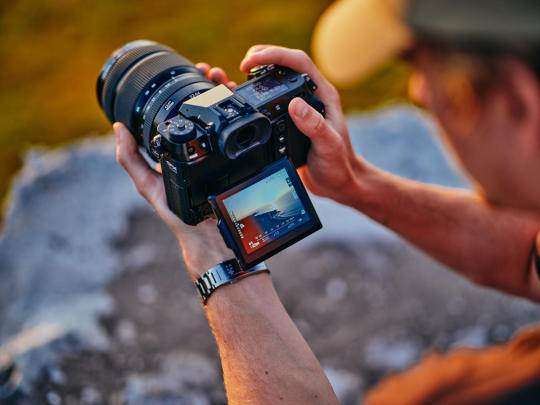
La GFX 100S II de fotograma medio de Fujifilm es más ligera, más barata y está mejorada con IA El sucesor de Fujifilm de la GFX 100... https://ujjina.com/la-gfx-100s-ii-de-fotograma-medio-de-fujifilm-es-mas-ligera-mas-barata-y-esta-mejorada-con-ia/?feed_id=627901&_unique_id=6645c658948b9
0 notes
Text
Fujifilm GFX 100 II hands-on: Digital Photography Review
See on Scoop.it - Amateur Photographer
Fujifilm's newest camera aims to bring modern AF, improved sensor stabilization and video recording technology into the medium format realm. Let's take a closer look at the GFX 100 II and everything it has to offer.
0 notes
Text
For these hardy Pentaxians who've weathered the storm for a very long time with their trusty Pentax 645Z medium format digicam, there is perhaps some mild on the finish of the tunnel in the case of a long-awaited successor. Whereas Pentax cannot determine which lenses will probably be renewed, what we do know is that if a Pentax 645Z (opens in new tab)-beater will get constructed it will not be a mirrorless digicam.• Among the greatest medium format cameras (opens in new tab) aren't truly mirrorless! This slightly curious information would not comes from rumors, however truly comes straight from Pentax itself through an interview in Japanese Cameraman journal (by the use of a report (opens in new tab) by Pentax Rumors).Apparently Pentax is presently contemplating new sensors for the subsequent 645 digicam, however it doesn’t have something particular to say concerning the alternative at this stage – aside from suggesting that, if it exceeds the present 50MP sensor, it would put older 645 FA lenses into query, as a result of their capability to work with larger decision sensors.(Picture credit score: Future)By these feedback, it is apparent that Pentax has not reached the testing stage at the moment – or it's retaining its playing cards near the chest, as testing may need discovered points.The panel continued to say that, "The present 645Z is extraordinarily good worth– it will not be doable to come back out with one thing on the identical worth now." Which might be fairly an understatement, as I'm positive everyone knows costs have gone up loads. At present the Pentax 645Z with the 75mm f/2.8 package lens at B&H (opens in new tab) or Adorama (opens in new tab) is priced at $3,996.95 – that is an incredible $3,000 off! The offers proceed within the UK the place digicam shops comparable to Wex (opens in new tab) or Park Cameras have the 645Z + 55mm f/2.8 (opens in new tab) listed for simply £4,999 – which is £1,500 off.There is no such thing as a arguing that even immediately this 50MP digicam is greater than able to producing excellent pictures – and being the primary weather-sealed medium format digicam to market that championed taking the studio outdoor, the costs above are actually a superb deal. So what's Pentax going to do to up the ante?(Picture credit score: Future)Going mirrorless is the apparent possibility, though according to Pentax' ongoing technique this isn't going to occur."It could be unfair to the individuals who had gathered their current lenses," stated the panel. And, when it was instructed that an adapter would resolve this, "Sure, however there can be an expectation that they'd come out with an entire set of recent lenses, which might not be reasonable for a few years."So, is the Pentax 645Z a sitting duck? I do not assume so. There are lots of loyal Pentax homeowners who swear by the 645Z, and even the older 645D; the techniques have an enormous quantity of AF lenses, with the FA and FA* lineup, and likewise the older guide focus lenses from the 120 movie (opens in new tab)days. So there may be nonetheless loads of life left within the system.(Picture credit score: Pentax)However we won't additionally ignore that point strikes on – now extra rapidly than ever – as evidenced by the likes of the Fujifilm GFX 50S II (opens in new tab) or Fujifilm GFX 100S (opens in new tab) with their wonderful trendy mirrorless specs, wonderful picture high quality, and a pretty price ticket to match.Will Pentax be capable to compete with a non-mirrorless digicam, in a now mirrorless market? It'll all come all the way down to prices, however there are many medium format backs on the market which have as much as 80 and 100 megapixels which are able to getting used with mirror-mechanical cameras. So it is definitely not over till it is over…Immediately's greatest Pentax 645Z offersIf this text has been of curiosity to you, why not check out our Pentax 645Z evaluate (opens in new tab) or take a look at our listing of the highest-megapixel cameras on the earth (opens in new tab).
#Pentax #talks #645Z #medium #format #successor #wont #mirrorless
0 notes
Text
HND1 Photography Report Task: Capture & Output
DIGITAL CAMERA SENSORS
A digital camera uses an array of millions of tiny light cavities or "photosites" to record an image. When you press your camera's shutter button and the exposure begins, each of these is uncovered to collect photons and store those as an electrical signal. Once the exposure finishes, the camera closes each of these photosites, and then tries to assess how many photons fell into each cavity by measuring the strength of the electrical signal. The signals are then quantified as digital values, with a precision that is determined by the bit depth. The resulting precision may then be reduced again depending on which file format is being recorded (0 - 255 for an 8-bit JPEG file).
Digital Camera Sensor Types
Medium Format
Medium format is the largest sensor type in digital cameras for photographic applications. However, it doesn’t come in just one size. Medium format has its own group of sensors, with its own equivalents to the four thirds, APS-C, and full-frame formats. There are a variety of sensor sizes for medium-format cameras, and typical sizes range from around 43.8×32.9mm to 53.7×40.2mm.
Due to their large image sensors, medium-format DSLR cameras are traditionally heavier and bulkier than their full-frame counterparts. But that changed, as brands like Hasselblad have come out with smaller mirrorless medium-format cameras like the X1D II to provide photographers with a lighter, more compact option. The newer Fujifilm GFX 100 is also a medium-format mirrorless camera and holds a whopping 102MP resolution.
35mm Full-Frame
Full-frame sensors are available in both DSLR and mirrorless cameras. They have the same dimensions as the 35mm film, hence the name. The 35mm full-frame sensor type is the gold standard among professional photographers who want the highest-quality images.
The dimensions of a 35mm sensor are typically 36×24mm.
The Canon EOS R5, for example, is a full-frame mirrorless camera option, and the popular Nikon D850 DSLR has a FX full-frame sensor.
APS-H
The groundbreaking EOS-1D was the first Canon camera to carry the APS-H sensor type was, and it launched in 2001. Canon released four more cameras (all members of the 1D line) with the same sensor type before discontinuing it.
The APS-H is slightly larger than the APS-C sensor format that many Canon DSLR cameras use today but smaller than a traditional full-frame sensor.
APS-C
The APS-C or crop-sensor format is the most well-known and most versatile of the bunch. The APS-C sensor is popular in DSLR and mirrorless cameras alike. Beginners and professionals alike use it thanks to its adaotability.
The typical APS-C sensor size is different across camera brands. Canon APS-C sensors are usually 22.3×14.9mm, while other brands like Nikon, Sony, Pentax, and more usually feature APS-C sensors with 23.6×15.6mm dimensions. Many cameras including the Canon EOS M50 Mark II, Fujifilm X100V, Sony Alpha a6600, and Nikon Z50 all hold APS-C sensors
Four Thirds/Micro Four Thirds
Created by Olympus and Panasonic, the Four Thirds System is a standard that allows for the compatibility of lenses and bodies across participating camera makers. Image sensor size is 17.3×13mm with a crop factor of 2.0 when compared to full-frame camera sensors.
On the mirrorless camera side, we have the Micro Thirds Format System, first released in 2008. It shares the Four Thirds System’s sensor size and specifications but uses a compact design with no space for the movable mirror, pentaprism, and other parts of the DSLR mechanisms not found in mirrorless cameras.
The Four Thirds System uses a 4:3 image aspect ratio, hence the name, and is featured in cameras like the Blackmagic Design Pocket Cinema Camera 4K. The Micro Four Thirds System uses the same ratio but can also record 16:9, 3:2, and 1:1 formats, and is included in cameras like the Olympus OM-D E-M1 Mark III and Panasonic Lumix G9.
1” Type (and below)
Any sensor that is about 1.5 to 1-inch in size or smaller can be found in non-interchangeable lens cameras (your typical point and shoot) and smartphone cameras.
High-end compact cameras like the Panasonic Lumix DMC-LX10 and the Sony Cyber-Shot DSC-RX10 IV use 1-inch sensors, allowing these cameras to produce good results—in terms of image and video quality—that you won’t get with regular point-and-shoot cameras.
Dynamic Range
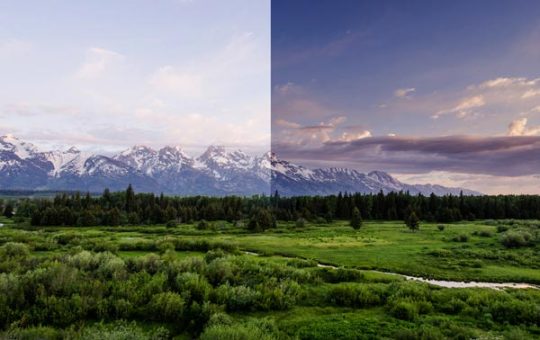
If you’ve ever had to take a photograph on a bright sunny day, chances are pretty high that you would have lost detail, possibly in the shadows or in the highlights, perhaps even both. This is not an exposure problem on your part, it’s more likely a limitation of the dynamic range of your camera – almost all cameras will come up against this problem at some time.
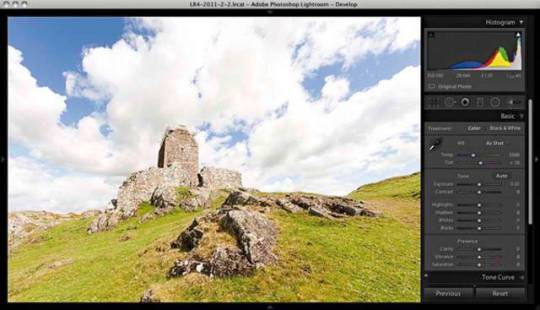
Notice the sky is lacking in detail. It is over exposed – outside of the range of the camera. There are actually two dynamic ranges you need to think about. One is the dynamic range of the subject, the second is the dynamic range of your camera. The dynamic range of the subject is a measure of the range of light intensities from the shadows to the highlights. In low light conditions the dynamic range (that is the difference between the darkest and the latest part of the subject) is quite small. On a bright sunny day that range is much higher and is often outside the range of the camera. Different cameras and different sensors will have bigger or smaller dynamic ranges. As long as the dynamic range of the subject doesn’t exceed the dynamic range of your camera you will be able to get a perfectly exposed photograph.
If the subject dynamic range is bigger than the cameras dynamic range and one part of your subject will be either under or over exposed. You can easily tell if the subject’s dynamic range exceeds that of your camera by using the histogram on your rear screen.

The histogram shows the range of subject brightness starting with black on the left going to white on the right. The width of the histogram chart represents the dynamic range of your camera sensor.
If the histogram fits inside of the histogram display area then the dynamic range of the subject is inside that of your camera and everything is good. If the histogram is clipped at either end then the subject range is too wide. Try changing your camera exposure and watch the histogram move left or right and see if you can fit the histogram inside of the display.
On the histogram shown you can see you can see the shadow area is outside of the sensor’s ability to register. The signal is “clipped” with no details being recorded. The left side of the histogram is crammed up tight against the edge, showing lack of detail.
On the right of the histogram there is still room – the photographer could open up the iris (or use a slower shutter speed) and get more detail in the shadow area without sacrificing detail in the highlights.
Be careful not to over expose the highlights!
A blown out highlight looks terrible whereas a shadow lacking detail is acceptable.
If the subject’s dynamic range is too big and will not fit in histogram and then you need to choose where you will lose information. Ninety-nine percent of the time a photograph that is exposed so the highlights have full detail and the shadows just go black with no detail is a much better option and gives a much more pleasing photograph than one where there is full detail in the shadow but where the highlights are completely burned out.
The almost golden rule is “expose for the highlights,” that is, expose so the highlights are not clipped. Shadows by definition are dark and it is hard to see detail there, so, if you have to loose a portion of the dynamic range it is almost always preferable to loose in the shadows.
There are ways to lift shadows – consider using a fill in flash or a reflector to lighten up those areas if they are close enough to the flashgun that it would have an effect.
Another option – and always a good piece of equipment to have in your camera kit – is to use a graduated neutral density (ND) filter.
BIT DEPTH
Bit depth is one of the most fundamental and important parameters you're likely to come across in photography and videography. This great video will give you a quick introduction to what bit depth is and why it matters to your work.
Coming to you from ZY Productions, this quick and informative video will teach you about bit depth. Bit depth is essentially how much information your camera can store in each color channel for each pixel. For example, a camera with 8-bit color depth can store a string of eight 0s and 1s in each color channel for each pixel. Since there are two possibilities (0 or 1) in each slot and eight slots overall per channel, that equates to 2^8=256 values per channel. Since there are three overall channels, this equates to (2^8)^3=16,777,216 total colors. Altogether, higher bit depths are better, as they create finer gradations, and this results in smoother transitions between tones. As the video notes, the standard JPEG is 8-bit, whereas raw files are typically 12-bit or 14-bit files. This is by far one of the best reasons to shoot in raw; the massive gain in information you get from those extra bits creates much more post-processing latitude. Check out the video above for more.
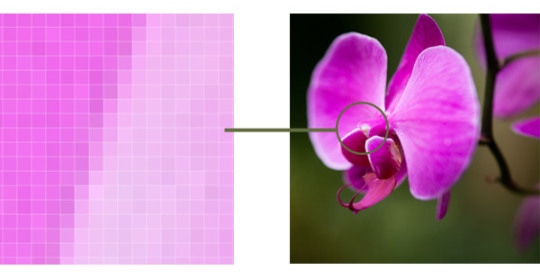
there is some lin with video about bit depth:
https://youtu.be/Z-0hszXbYD0
DIGITAL NOISE
Digital camera image noise
"Image noise" is the digital equivalent of film grain for analogue cameras. Alternatively, one can think of it as analogous to the subtle background hiss you may hear from your audio system at full volume. For digital images, this noise appears as random speckles on an otherwise smooth surface and can significantly degrade image quality. Although noise often detracts from an image, it is sometimes desirable since it can add an old-fashioned, grainy look which is reminiscent of early film. Some noise can also increase the apparent sharpness of an image. Noise increases with the sensitivity setting in the camera, length of the exposure, temperature, and even varies amongst different camera models.
CONCEPT: SIGNAL TO NOISE RATIO
Some degree of noise is always present in any electronic device that transmits or receives a "signal." For televisions this signal is the broadcast data transmitted over cable or received at the antenna; for digital cameras, the signal is the light which hits the camera sensor. Even though noise is unavoidable, it can become so small relative to the signal that it appears to be nonexistent. The signal to noise ratio (SNR) is a useful and universal way of comparing the relative amounts of signal and noise for any electronic system; high ratios will have very little visible noise whereas the opposite is true for low ratios. The sequence of images below show a camera producing a very noisy picture of the word "signal" against a smooth background. The resulting image is shown along with an enlarged 3-D representation depicting the signal above the background noise.

The image above has a sufficiently high SNR to clearly separate the image information from background noise. A low SNR would produce an image where the "signal" and noise are more comparable and thus harder to discern from one another.

ERMINOLOGY: ISO SPEED
A camera's "ISO setting" or "ISO speed" is a standard which describes its absolute sensitivity to light. ISO settings are usually listed as factors of 2, such as ISO 50, ISO 100 and ISO 200 and can have a wide range of values. Higher numbers represent greater sensitivity and the ratio of two ISO numbers represents their relative sensitivity, meaning a photo at ISO 200 will take half as long to reach the same level of exposure as one taken at ISO 100 (all other settings being equal). ISO speed is analogous to ASA speed for different films, however a single digital camera can capture images at several different ISO speeds. This is accomplished by amplifying the image signal in the camera, however this also amplifies noise and so higher ISO speeds will produce progressively more noise.
TYPES OF NOISE
Digital cameras produce three common types of noise: random noise, "fixed pattern" noise, and banding noise. The three qualitative examples below show pronounced and isolating cases for each type of noise against an ordinarily smooth grey background.

Fixed Pattern Noise
Long Exposure
Low ISO Speed
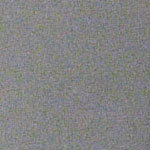
Random Noise
Short Exposure
High ISO Speed

Banding Noise
Susceptible Camera
Brightened Shadows
2 notes
·
View notes
Text
The Best Digital Cameras to Buy

Every photographer needs a reliable camera, whether they’re an amateur or a professional. It goes without saying that the camera they use is the most important aspect of what they do. If you have a camera that doesn’t meet all your requirements, you’re not going to get the pictures you need and what’s the use in that for a photographer? It’s like Lewis Hamilton entering a race with a Fiat 500 instead of his Mercedes-AMG One.
So, if you want to be a champion of photography, it’s time you invest in a top-quality digital camera. One of the best online camera shops is Wilkinson Cameras – they stock all the top brands, offer part exchanges and their experts are always on-hand to help.
I’m going to run through some of the digital cameras on their website that could suit your requirements and be ideal for you. Remember though; they’re constantly updating their stock and might have something even better, so be sure to visit their site and see for yourself. Here we go:
1. Sony Cybershot RX1R Mark II Compact Digital Camera
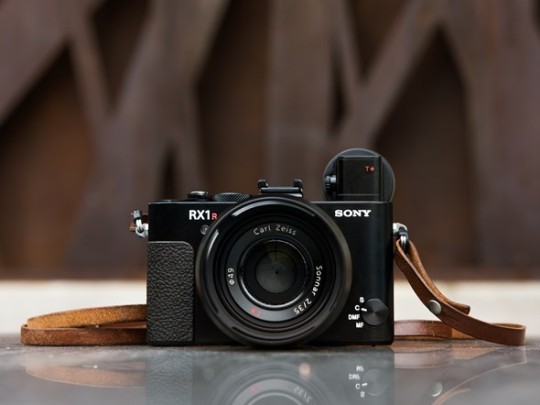
Sony is one of the big players in the photography game, and for good reason too. Their digital cameras are of excellent quality, and this one we’ve picked out is no different. The Sony Cybershot RX1R Mark II is compact but capable with full-frame format compatibility, a large-aperture ZEISS® Sonnar T* 35mm F2 lens, a tiltable LCD screen, and many more features. You’re able to take truly breath-taking pictures. This digital camera is certainly a great piece of equipment to invest in.
2. Nikon D500 Body

Powerful, portable and agile - the Nikon D500 combines the high quality of the Nikon D5 with the flexibility of the DX system. Whatever you’re shooting, whether it’s wildlife or sports, the Nikon D500 will capture the perfect shot. Featuring a 153-point AF system, 10 fps continuous shooting, lightweight DX system, 4K UHD video, SnapBridge support, and much more. Could the D500 be your ideal photography partner?
3. Canon EOS 1D X Mark III Body

This camera is a little on the pricey side, which is why it was designed for professionals. The Canon EOS 1D X Mark III helps you capture split second moments in time and make them last forever. This digital camera ensures lightning speed when shooting stills and sleek smoothness when capturing video. Designed to be tough, reliable and intuitive, this camera is one of the best out there.
4. Nikon D6 DSLR Camera Body
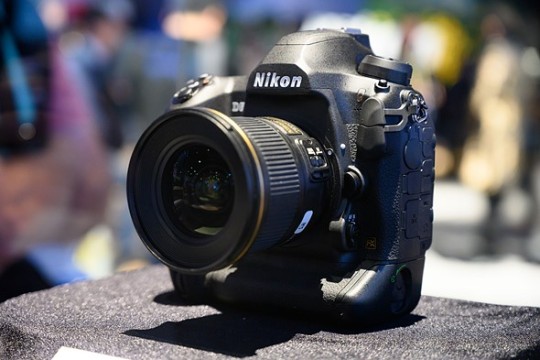
Back to Nikon – this digital camera looks as good as it shoots. Another camera built for professionals, featuring Nikon’s most powerful AF system yet and fast in-camera connections for real-time image transfer, the D6 lets you create and deliver without limitation. Extreme speed, precision and high quality are what comes to mind when you think of the Nikon D6.
5. Fujifilm GFX 100S Body

Last, but certainly not least, the Fujifilm GFX 100S was designed for perfection in image quality, which is exactly what photographers seek. The Fujifilm GFX 100S creates remarkably detailed images that reach further and deeper into scenes to reveal amazing colour fidelity and rich shadow detail. Experience unparalleled colour accuracy and flexibility with this digital camera.
And that was the list of my personal favourite digital cameras to purchase in 2022. You can purchase all of these on the Wilkinson Cameras’ camera shop, along with many other cameras, lenses and accessories.
Enjoy this blog post? Follow me for more!
0 notes
Text
JJC Eyecup Finder Eyepiece EF-XT L Replacement for Fuji X-T4 X-T3 X-T2 XT4 XT3 XT2 XT1 X-H1 XH1 GFX100S GFX100 GFX 50S GFX50S II Camera Viewfinder Eyeshade Replaces Fuji Eye Cup EF-XTS EF-XTM EF-XTL
JJC Eyecup Finder Eyepiece EF-XT L Replacement for Fuji X-T4 X-T3 X-T2 XT4 XT3 XT2 XT1 X-H1 XH1 GFX100S GFX100 GFX 50S GFX50S II Camera Viewfinder Eyeshade Replaces Fuji Eye Cup EF-XTS EF-XTM EF-XTL
Compatible with Fujifilm GFX 100S GFX100 GFX50S GFX50S II X-H1 X-T4 X-T3 X-T2 X-T1 camera
Replaces Fujifilm EC-XT L finder eyecup
Dome-shaped eyecup effectively shields light, making it easier to see the viewfinder
Made from soft and durable silicone + high quality ABS
Can be installed to the camera easily and securely
[amz_corss_sell asin=”B06X9S5LS8″]
View On WordPress
1 note
·
View note
Text
Fujifilm GFX 50S II Street Photography POV
Fujifilm GFX 50S II Street Photography POV
This fourth episode of YouTube mini-series in Florence is all about GFX 50S II Street Photography. As I mentioned before, this is not as fast and powerful as the GFX 100S. But the new iteration of this camera has a lot more processing power so it is much easier to use outdoors and not miss a moment.
I made a video about shooting Street Photography with the previous version of Fujifilm GFX 50S so…
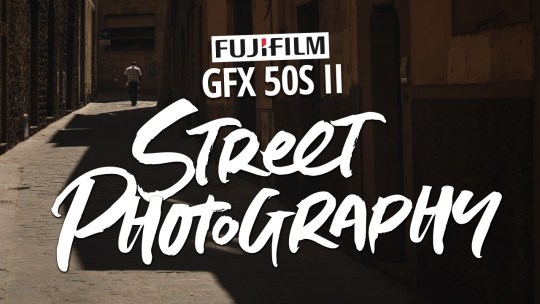
View On WordPress
0 notes
Text
The Best Medium Format Cameras We've Reviewed (2021)
We've tested all of them. It's hard to beat these.
Medium format is becoming more attainable by modern photographers. It’s also not necessarily just for portraits and landscapes. You can photograph events and photojournalistic assignments with medium format now. The autofocus has improved a lot. And what’s better is that a lot of the time, you don’t even really need to edit the images. It’s so nice to get your live back in that way! We dove into…
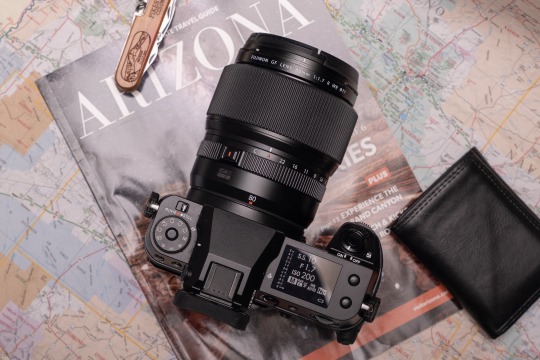
View On WordPress
#autofocus#fujifilm#Fujifilm GFX#Fujifilm gfx 100s#Fujifilm GFX 50R#Fujifilm GFX 50S II#image quality#Medium Format Cameras#quality#review
0 notes
Text
Fujifilm GFX 50S II Is Company’s Cheapest Medium Format Camera Yet
Looking for an entry way into the GFX system without wiping out your savings?
At its September X Summit event, Fujifilm introduced the latest and cheapest medium format camera yet – the Fujifilm GFX 50S II.
Coming in at $3,999 for the body, it’s almost $2000 cheaper than the GFX 100S, so that’s a significant discount.
For $4000, the GFX 50S II offers you a 51.4 MP CMOS sensor, 1.7x larger than the one in a full frame camera, five-axis in-body image stabilization system to negate up to 6.5 stops of camera shake and an improved autofocus compared to the GFX 50S. สล็อตออนไลน์
0 notes
Text
Fujifilm just announced its cheapest medium format camera yet
Fujifilm just announced its cheapest medium format camera yet
Image: Fujifilm
Today is Fujifilm’s September X Summit event, and the company has announced a slew of new hardware including several cameras and lenses for both the GFX and X systems. Leading the way is the new GFX 50S II, the company’s latest medium format camera. More importantly, at $3,999 body-only, it’s Fujifilm’s cheapest way into the GFX system yet. For comparison, the GFX 100S costs…
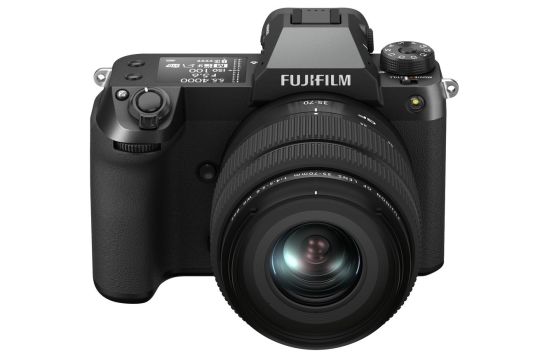
View On WordPress
0 notes
Text
Thông số mới nhất về máy ảnh Fujifilm GFX100S
Hãy cùng theo dõi những thông tin mới nhất về chiếc máy ảnh Fujifilm GFX100S mới này để xem nó có gì nổi bật đáng mua hơn không bạn nhé!

Chất lượng hình ảnh vượt trội
GFX100S được trang bị cùng một cảm biến định dạng lớn 102MP được sử dụng trong mẫu hàng đầu của dòng GFX, “GFX100”. Nhưng Fujifilm nâng chất lượng hình ảnh lên một tầm cao mới bằng cách kết hợp cảm biến với bộ xử lý hình ảnh tốc độ cao “X-Processor 4”, “thấu kính FUJINON GF” mang lại độ phân giải hình ảnh đáng kinh ngạc và tái tạo màu sắc công nghệ được phát triển trong nhiều năm trong ngành kinh doanh phim ảnh.
GFX100S có cảm biến hình ảnh chiếu hậu với hiệu suất thu nhận ánh sáng tuyệt vời. Mặc dù có độ phân giải cảm biến siêu cao, máy ảnh Fujifilm này tận dụng dải động rộng của nó để đạt được tông màu phong phú và ít nhiễu.
Việc cắt bớt vùng sáng và vùng tối được giảm bớt để tạo ra hình ảnh ở định nghĩa ba chiều như nhìn bằng mắt thường. Độ sâu trường ảnh nông chỉ có ở cảm biến khổ lớn cũng làm cho hậu cảnh mất nét để có hiệu ứng bokeh mượt mà.
Màn hình LCD và kính ngắm
Ở mặt sau, Fujifilm GFX100S có kính ngắm cố định OLED 3,68 triệu điểm cùng với màn hình LCD cảm ứng nghiêng 3,2 inch, 2,36 triệu điểm. Trên cùng là màn hình LCD 1,8 inch để hiển thị các cài đặt hiện tại của bạn.
Thân máy nhỏ gọn cho tính di động tuyệt vời
Dựa trên Fujifilm GFX100, GFX100S mới hứa hẹn có thiết kế nhỏ hơn, di động hơn, chỉ nặng 900g. Kích thước này tương tự như nhiều máy ảnh full-frame, nhưng lại có cảm biến 102 megapixel của Fujifilm.
Vỏ máy được làm bằng hợp kim magiê có độ cứng cao. Thêm độ dày xung quanh đế của ngàm ống kính, nơi chịu tải trọng lớn hơn, đã làm cho thân máy ảnh rất chắc chắn.
Cấu trúc chống bụi và thời tiết chịu được hoạt động ở nhiệt độ thấp đến -10 ℃ có nghĩa là máy ảnh có thể được sử dụng trong những điều kiện chụp ảnh khắc nghiệt nhất.
Báng cầm đã được định hình để làm cho việc cầm máy ảnh trở nên thoải mái và ổn định hơn đáng kể. Ví dụ, nó làm giảm căng thẳng tay đáng kể khi sử dụng ống kính zoom lớn để có trải nghiệm chụp ảnh thoải mái.
Cơ chế IBIS mới
GFX100S có cơ chế IBIS 5 trục mới được phát triển lên đến 6,0 điểm dừng. Nó được kết nối với bo mạch chính của máy ảnh trong hệ thống dây điện được tối ưu hóa để làm cho thiết bị nhỏ hơn khoảng 20% và nhẹ hơn khoảng 10% so với thiết bị IBIS trong GFX100.
Nó sử dụng cảm biến gia tốc và con quay hồi chuyển hiệu suất cao cũng như một thuật toán cập nhật để phát hiện rung động để ổn định hình ảnh tốt hơn GFX100. Khả năng kiểm soát rung máy khi chụp bằng tay cho cả ảnh tĩnh và video mang đến sự thoải mái nâng cao cho người dùng.
Lấy nét tự động nhanh và chính xác
GFX100S mang lại khả năng lấy nét tự động nhanh và chính xác cao nhờ công cụ xử lý hình ảnh tốc độ cao “X-Processor 4” và cảm biến hình ảnh có 3,76 triệu điểm ảnh nhận diện theo pha trên bề mặt (độ phủ xấp xỉ 100%).
Thuật toán dự đoán chuyển động và nhận diện khuôn mặt / mắt đã được nâng cấp để theo dõi chính xác đối tượng chuyển động và người trong khung hình, đảm bảo ghi lại những khoảnh khắc ảnh quyết định.
Máy ảnh lấy nét mượt mà ngay cả trong điều kiện gần tối xuống -5,5EV, chẳng hạn như trong phòng tối hoặc ban đêm ngoài trời chỉ được chiếu sáng bằng ánh sao, cung cấp cho người dùng khả năng lấy nét tự động chính xác trong điều kiện ánh sáng yếu.
Mô phỏng phim và video
Máy ảnh này cũng bao gồm chế độ chụp đa ảnh 400MP độ phân giải cực cao gần đây đã được giới thiệu cho GFX 100 và Fujifilm cho biết GFX 100s đã cải thiện tính năng theo dõi Far AF và nhận diện khuôn mặt / mắt so với mẫu cũ hơn.
Về khả năng quay phim, GFX100s cũng không hề xoàng. Máy ảnh cung cấp khả năng ghi hình DCI 4K / 30p, với đầu ra ProRes Raw qua HDMI. Fujifilm F-Log và HLG được bao gồm, và có một chế độ Digital IS (ổn định kỹ thuật số) mới, bổ sung thêm một hình cắt khiêm tốn 1,1 lần cho tất cả các chế độ.
Cuối cùng, thời gian ghi âm tối đa đã được kéo dài lên 120 phút, so với giới hạn 60 phút trên GFX 100.
Thời lượng pin ấn tượng
Một bổ sung đáng hoan nghênh khác cho GFX100S là pin NP-W235 mới, chúng ta đã thấy trên Fujifilm X-T4. Điều này hứa hẹn cung cấp 460 bức ảnh mỗi lần sạc – ít hơn 800 bức ảnh được quản lý bởi GFX100, nhưng máy ảnh đó có một báng pin không thể tháo rời làm tăng thêm sức nặng đáng kể của nó.
Máy ảnh có ổ cắm tai nghe và mic 3,5 mm, cổng USB-C và Micro HDMI và ổ cắm PC Sync cho đèn flash, cũng như ổ cắm phát hành từ xa 2,5 mm.
Điều thú vị là GFX 100s có hai khe cắm thẻ nhớ SD / SDXC UHS-II.
Nguồn: https:/kpnet.vn/thong-tin-moi-nhat-ve-chiec-may-anh-fujifilm-gfx100s.html
Nơi cung cấp các sản phẩm công nghệ, máy ảnh, ống kính,.. uy tín chất lượng
Công ty cổ phần công nghệ Kyma
Địa chỉ: 474 Nguyễn Thị Minh Khai, Phường 2, Quận 3, TP. Hồ Chí Minh
132 -134 Yên Lãng, P. Thịnh Quang, Q. Đống Đa, TP Hà Nội
0 notes
Photo

Have you seen the new camera announced by Fujifilm? The GFX 50S Mark II is the latest addition to the digital medium format family. And it is sooooo good. @fujifilmuk gave me the opportunity to test it for a few weeks, in London as well as in my hometown Florence, and I took so many photos with it. Even without the überperforming sensor of the big brother 100S, the GFX 50S Mark II is a very good improvement on the first model. It’s more portable and quite faster. Fast enough to shoot a decent burst mode to capture the exact moment. In this photo taken in Florence, the light was casting a very narrow beam, therefore the burst mode was essential and a far more reliable tool than my own reflexes . And if you look at all the slides in the carousel, you can see how much detail is captured by this incredible camera. The last one is the original shot on a wide angle! This gives me the opportunity to start a new series and go back to Street Photography for a while. Of course, most of the coming photos, if not all, are taken with the new GFX 50S II. Which, by the way, is also featured in a YouTube mini-series on my channel. Now in its second episode with the 3rd coming soon!
I think you should all go subscribe now… 😉 Laterz! . . . . . @fujifilmx_us @fujifilmitalia @fujifilmfrance @fujifilm.es @streetphotographersfdn @tropereader @igersfirenze . #fujifilmgfx #fujifilmgfx50sii #fujifilmldn #myfujifilmlegacy #repostmyfujifilm #streetphotographymagazine #worldstreetphotography #streetphotographybw #framesmag #appicoftheweek #londonvisionaries #spicollective #florence (at Firenze, Tuscany, Italy) https://www.instagram.com/p/CTkYUlDsXHR/?utm_medium=tumblr
#fujifilmgfx#fujifilmgfx50sii#fujifilmldn#myfujifilmlegacy#repostmyfujifilm#streetphotographymagazine#worldstreetphotography#streetphotographybw#framesmag#appicoftheweek#londonvisionaries#spicollective#florence
0 notes